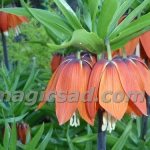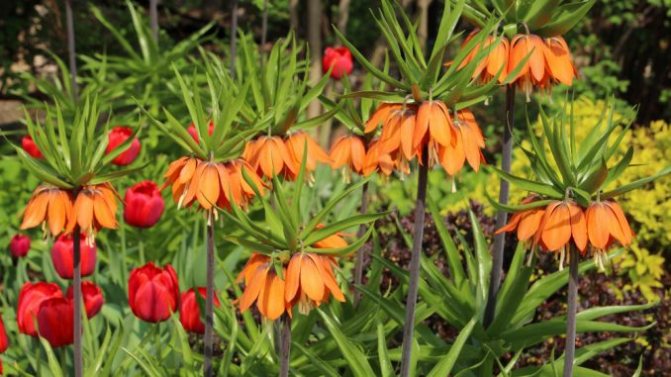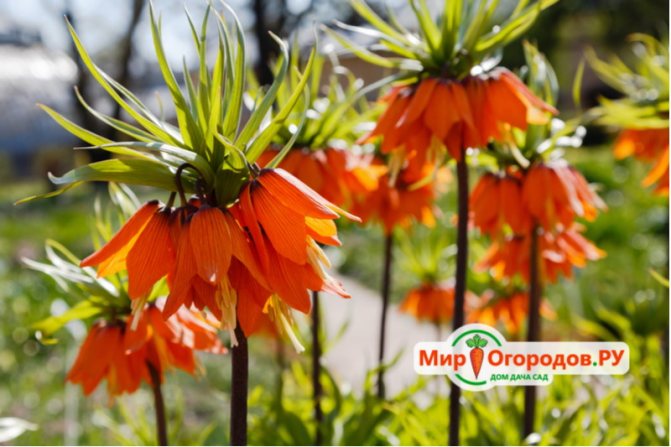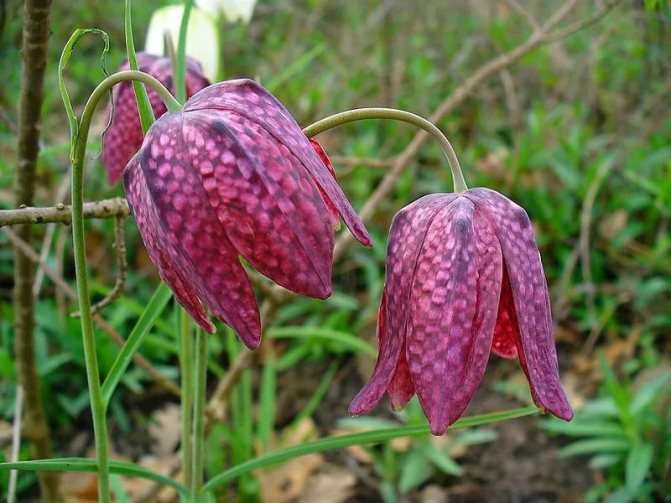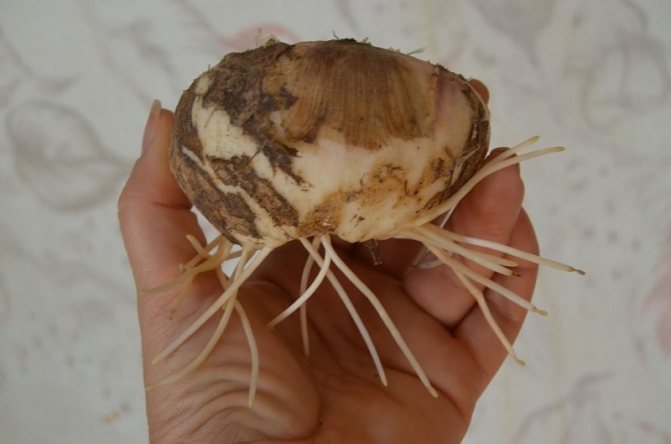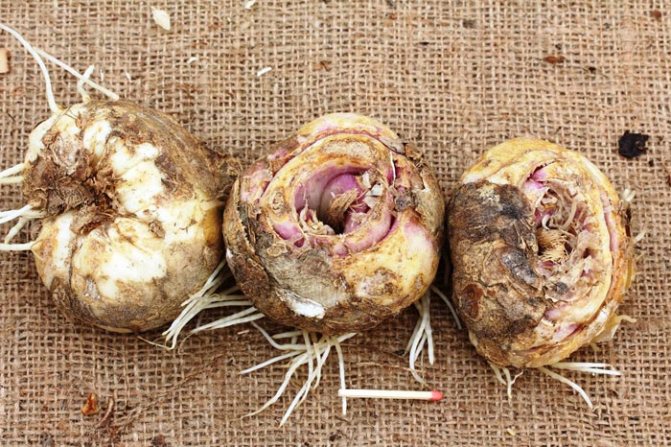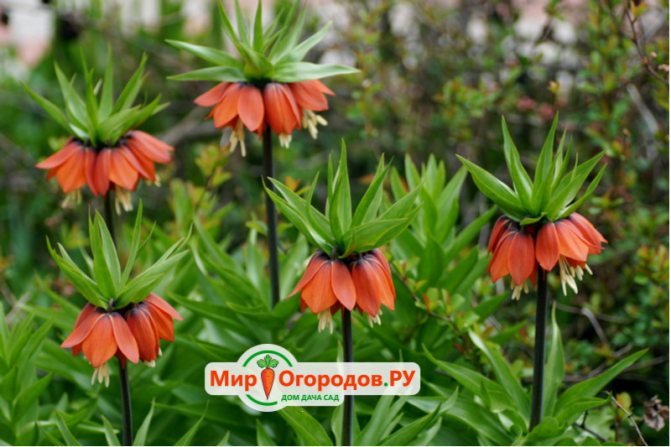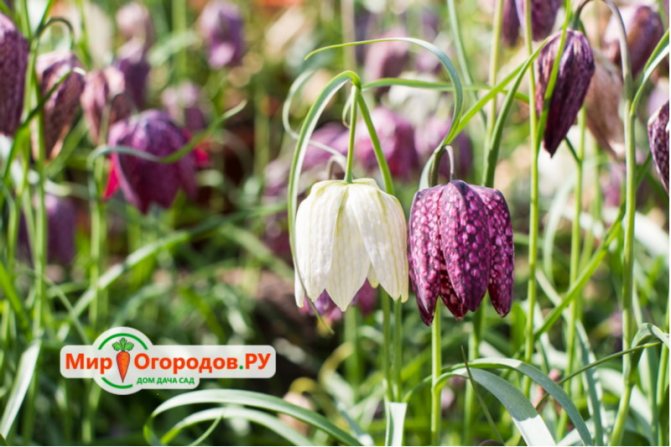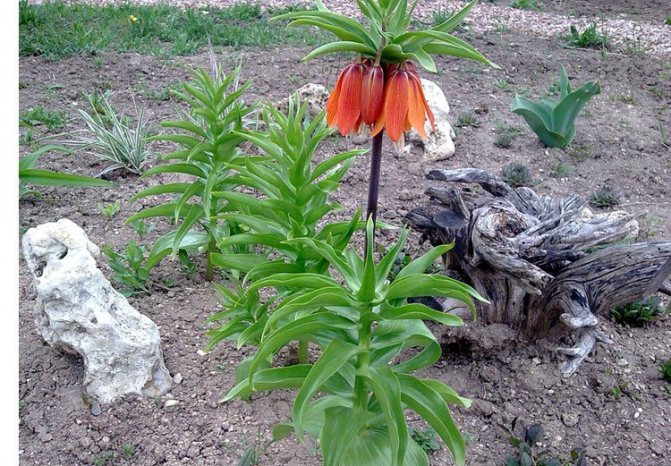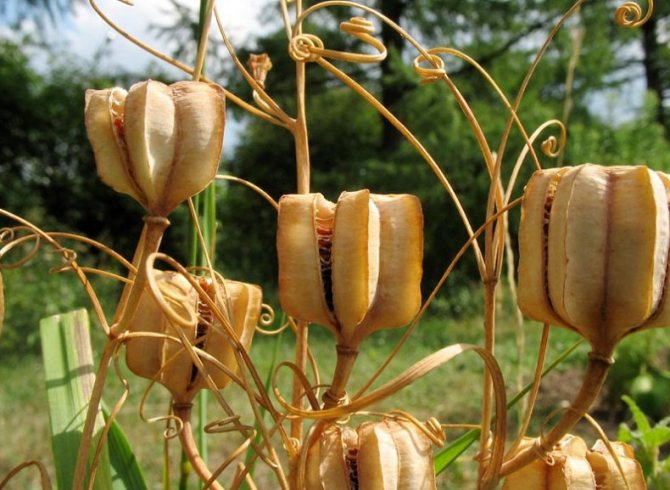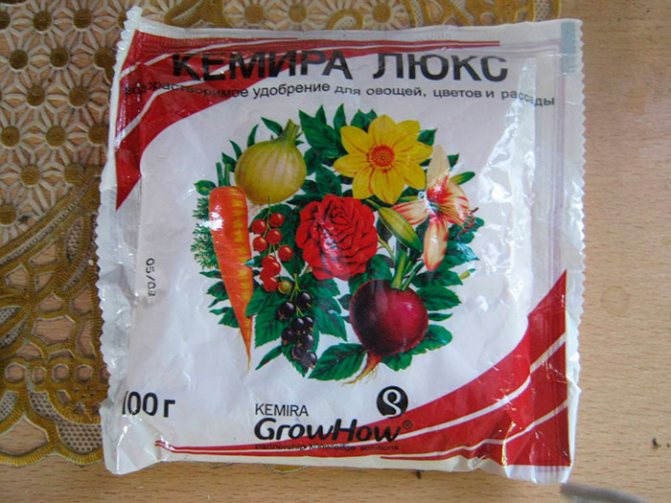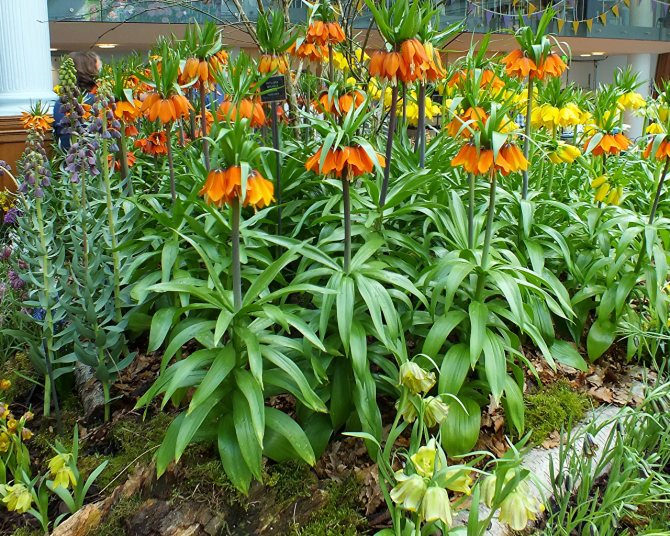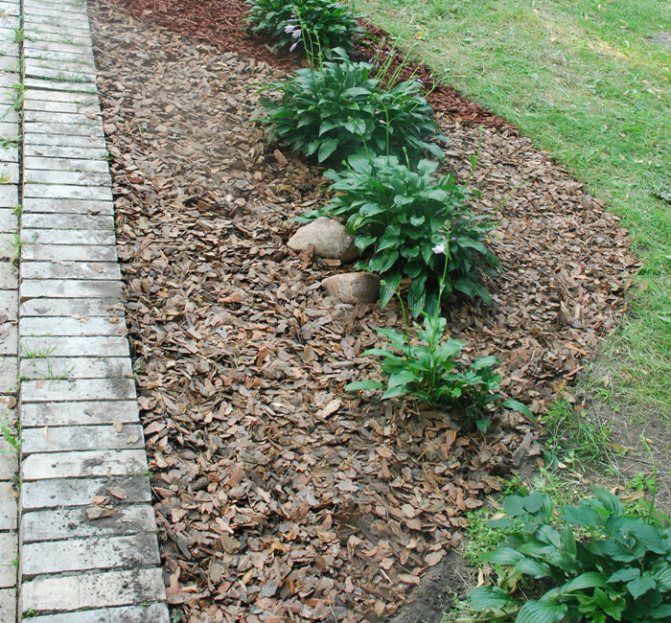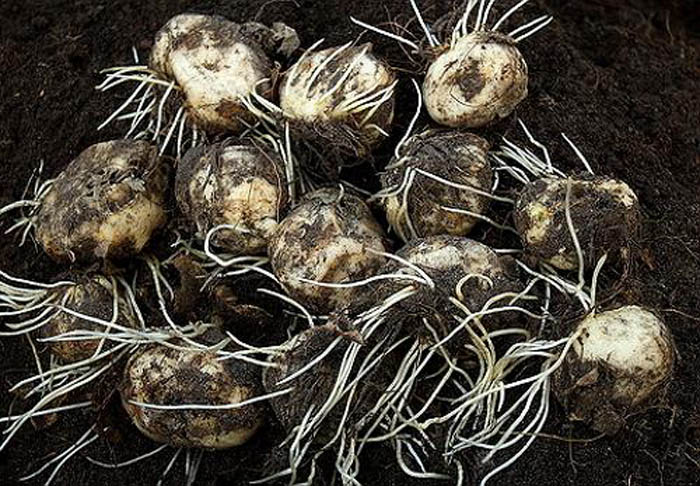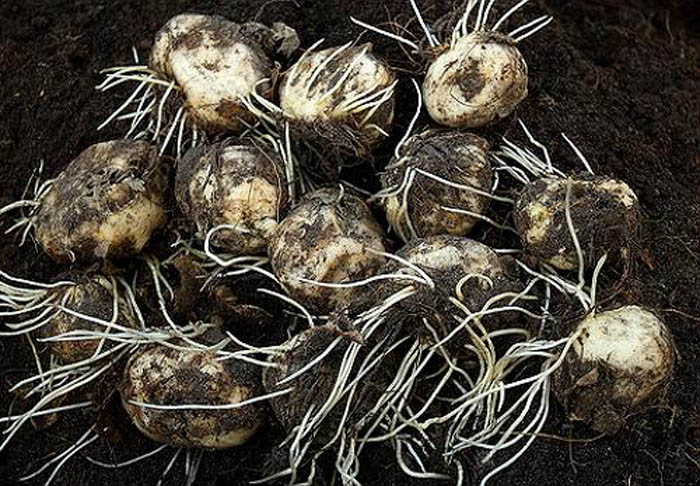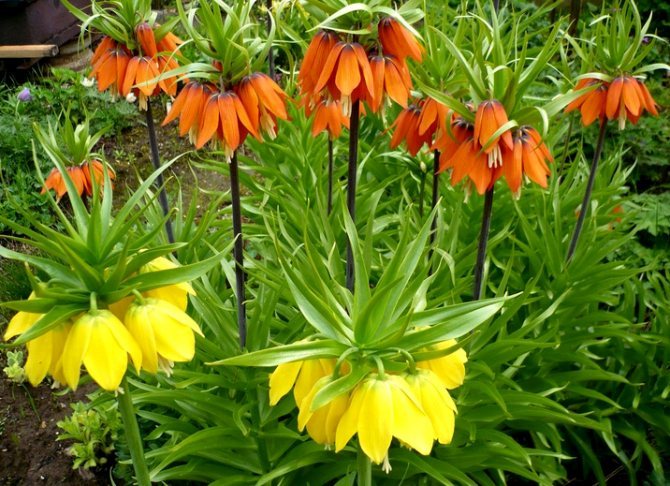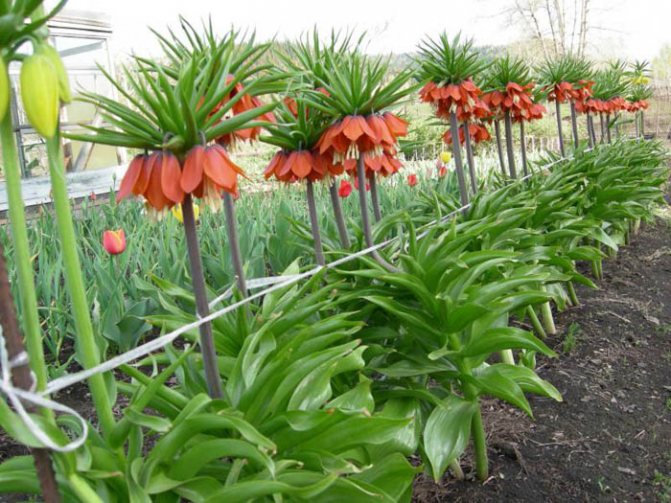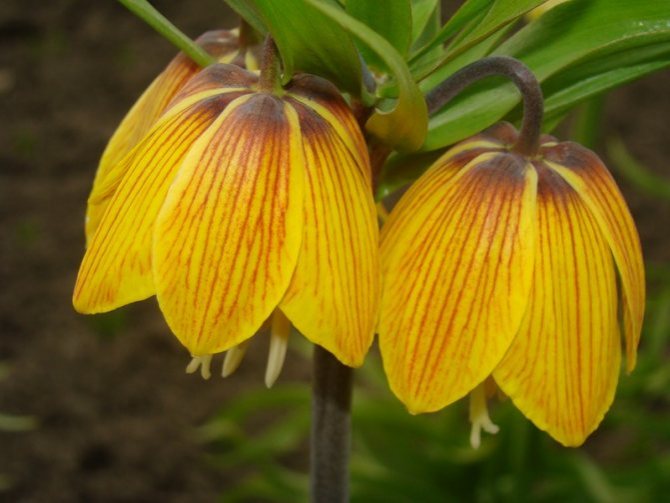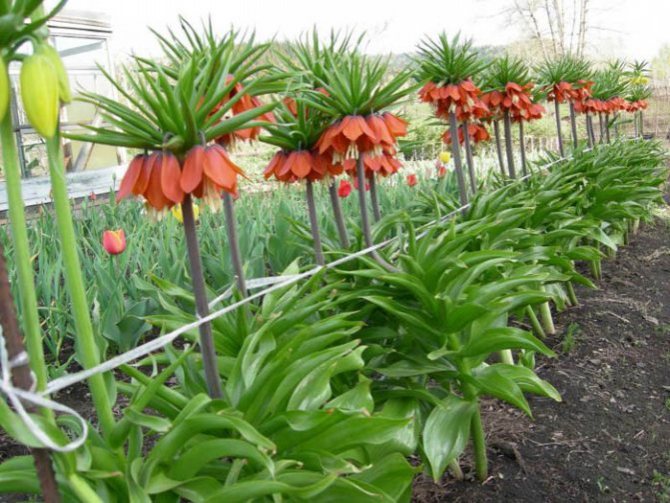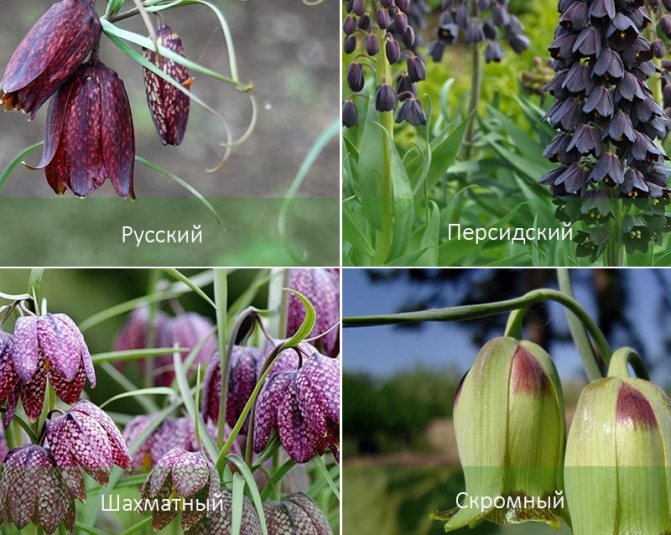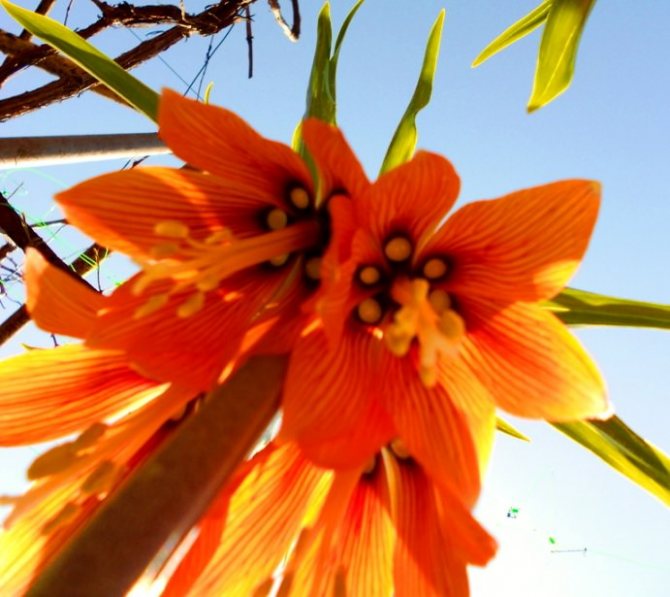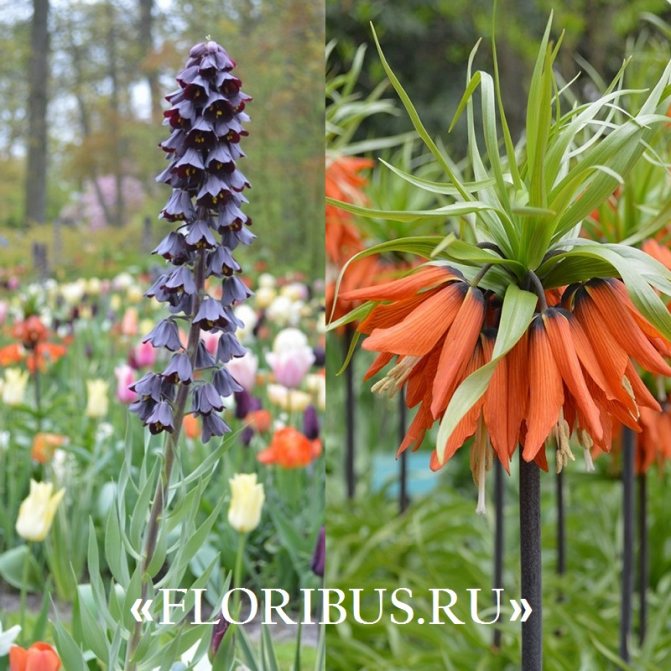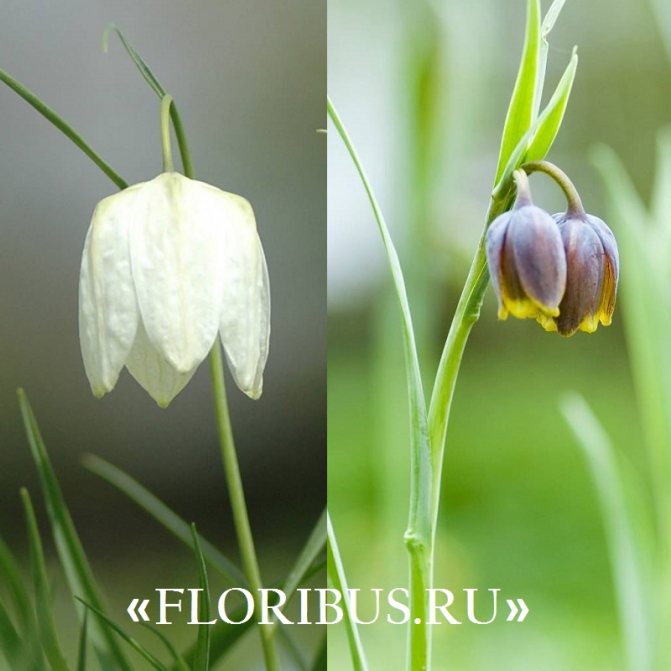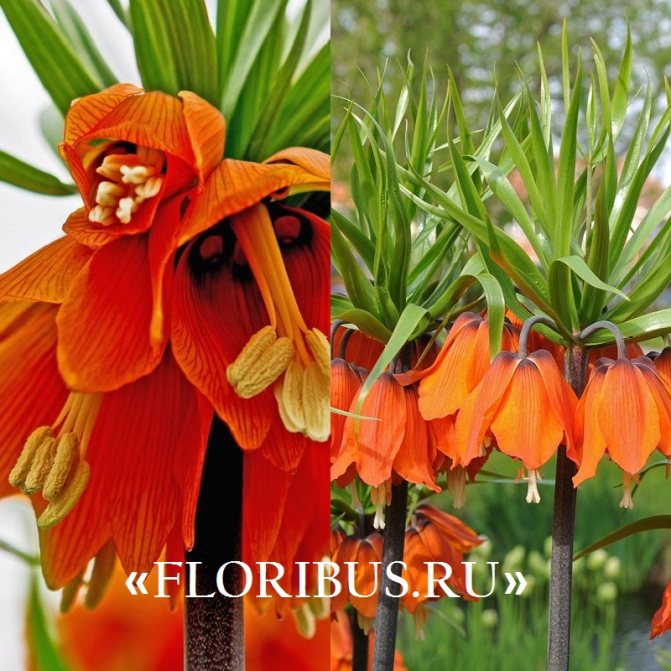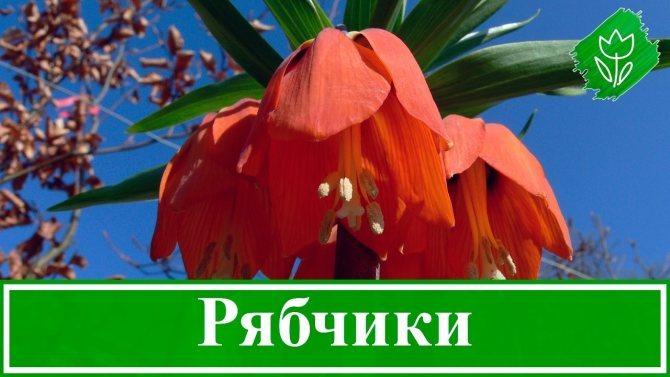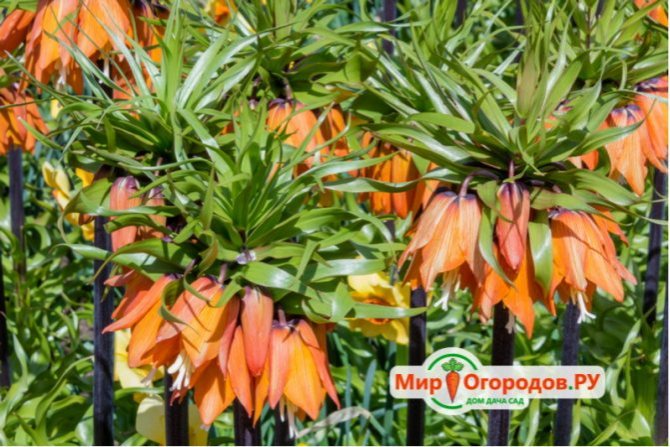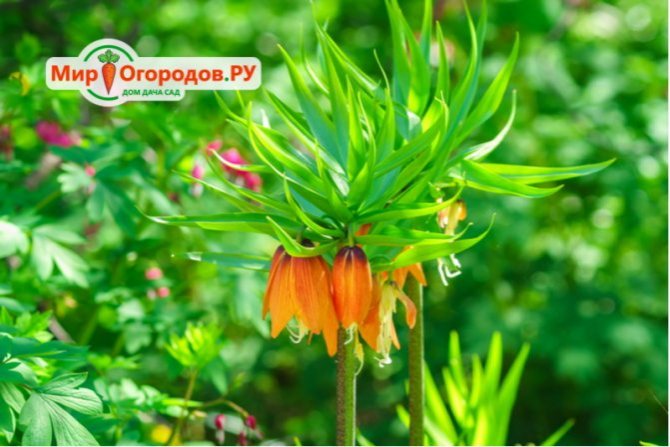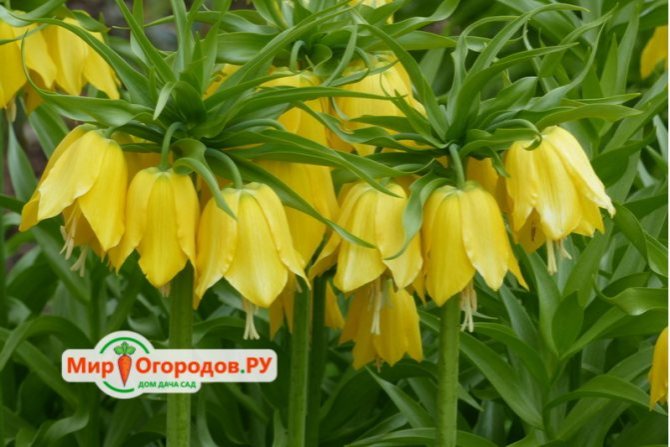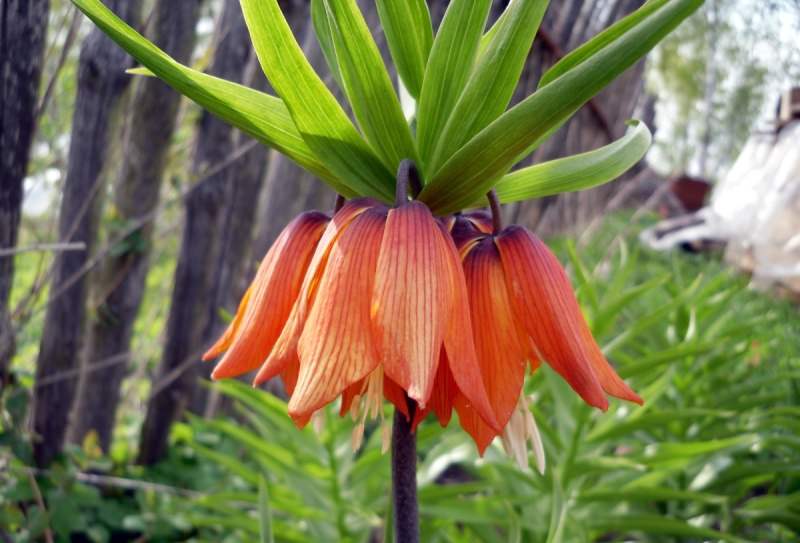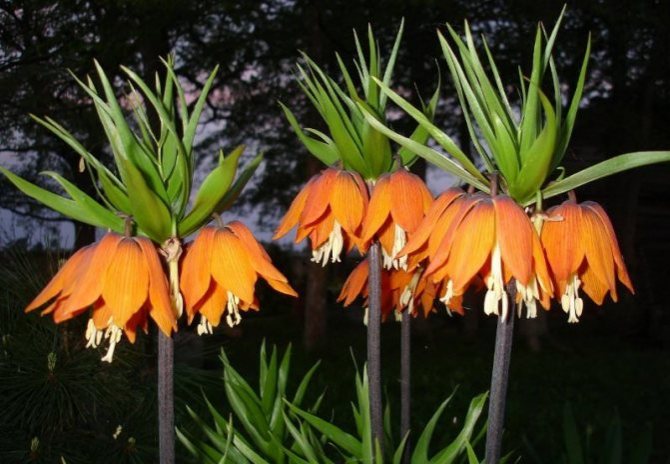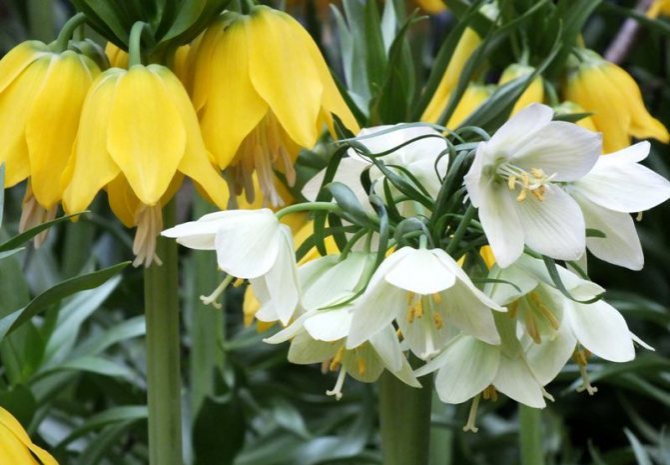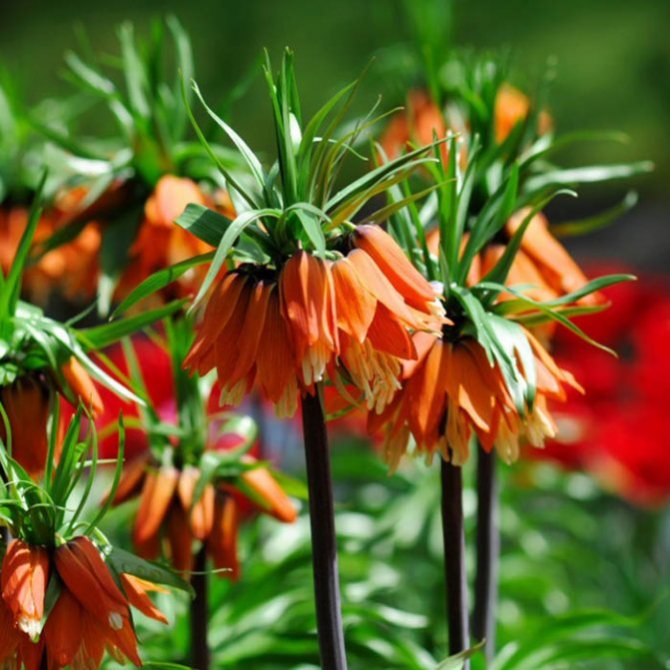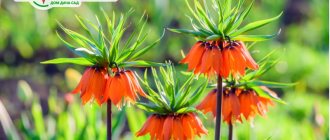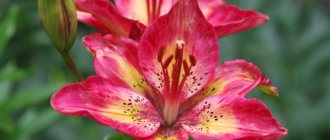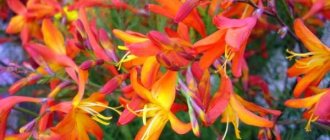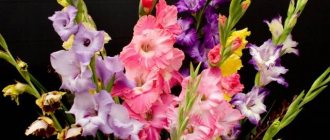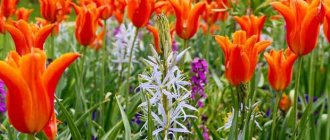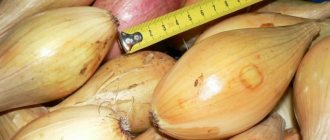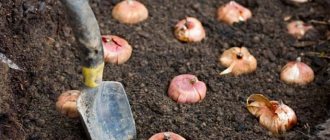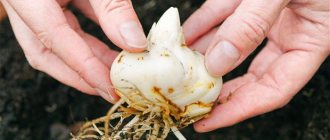Hazel grouses are flowers that are the subject of admiration not only for a grower, but also for any person who sees this unusual flower.
Every year one can observe how a new spring, cautiously, slowly, takes its first steps on the earth waking up from winter sleep: first, snowdrops, crocuses, hellebores make their way. The flowers of hazel grouse do not keep themselves waiting long.
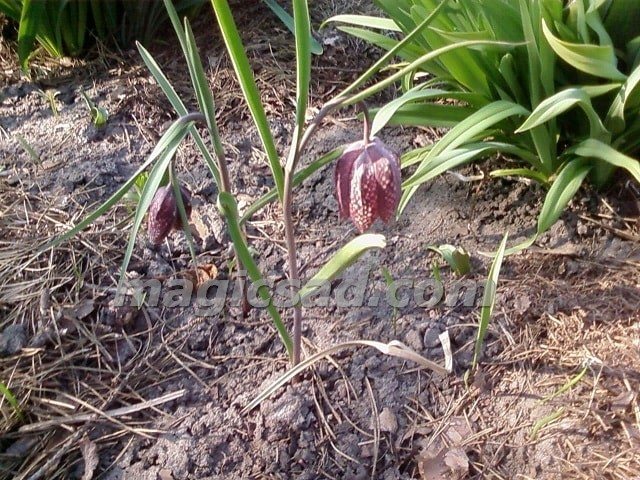
Contrary to the discreet and slightly strange name, hazel grouse or fritillaria especially stands out among bulbous ones. He is the most mysterious and varied. Many admire the large caps of the imperial hazel grouse flowers, proudly towering over the spring flower bed.
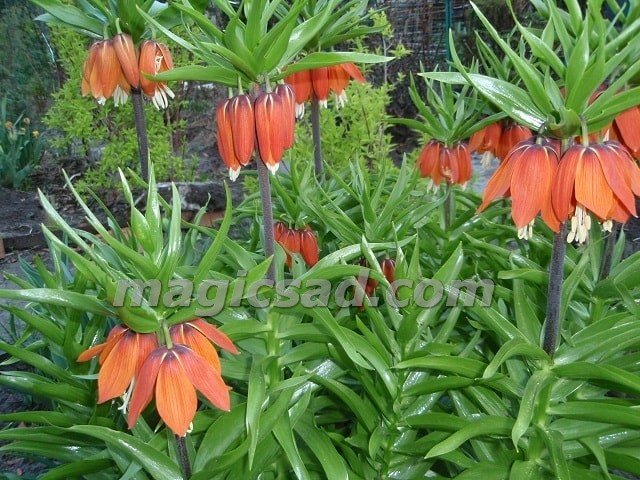

He proudly displays a wreath of bell-shaped flowers and a naughty hair of leaves.
And someone likes a small delicate white flower - also a hazel grouse, but a checkerboard one, “alba” variety.
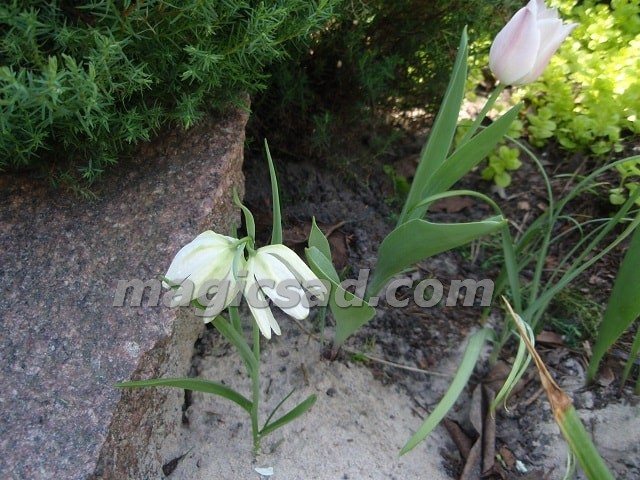

There are many species: Caucasian, Persian, Kamchatka, imperial, chess, Mikhailovsky hazel grouse, etc. - about 100, common in the temperate zone of Europe, North America and Asia.
Grouse imperial - species and varieties
The imperial hazel grouse flower has not only large and beautiful inflorescences, but also high stems, and often they even reach 1.5 meters in height.
Important! Due to the attractive appearance of such a flower, it is effectively used in the process of creating rockeries, alpine slides or various other floral arrangements.
The stem of the plant is considered strong and strong, so even if a large flower begins to tilt, it will not lead to bending of the stem. Usually imperial hazel grouse has at least 6 flowers with orange colors. Flowering lasts a short time, as this process usually does not take more than 20 days.
There are several varieties of imperial hazel grouse, but the most popular species for cultivation in private territory are:
- Raddeana (Fritillaria imperialis Raddeana) - is a hardy plant, and it is allowed to grow it even in the most specific and unfavorable conditions. The flowers can be yellow or cream colored. They are large in size, and about 5 flowers are collected in a racemose inflorescence. The flowering period usually does not exceed two weeks.
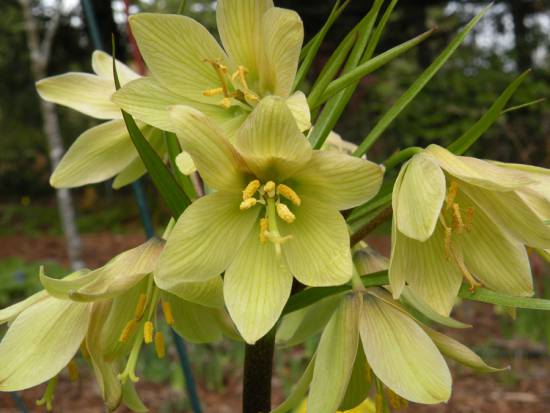

Grouse imperial Raddeana
- Rubra (Fritillaria imperialis Rubra). This imperial hazel grouse reaches 60 cm in height. The flowers are bright red and large in size.
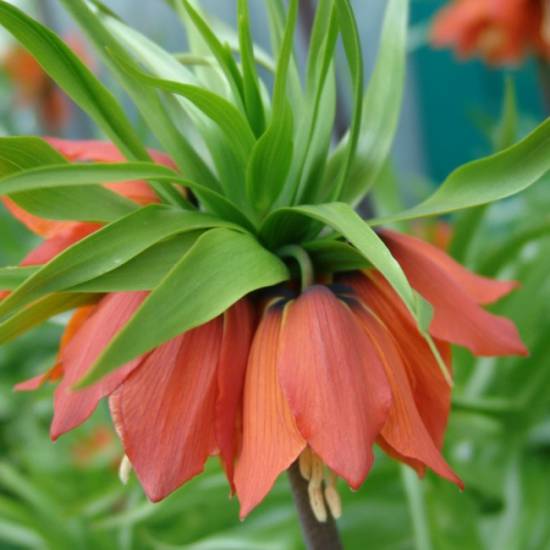

Grouse imperial Rubra
- Strip Beauty (Fritillaria imperialis Striped Beauty). This variety of imperial hazel grouse blooms for a long time, so you can enjoy the beautiful and large flowers even for a month and a half. The flowers are large in size, and their colors can be orange or golden.
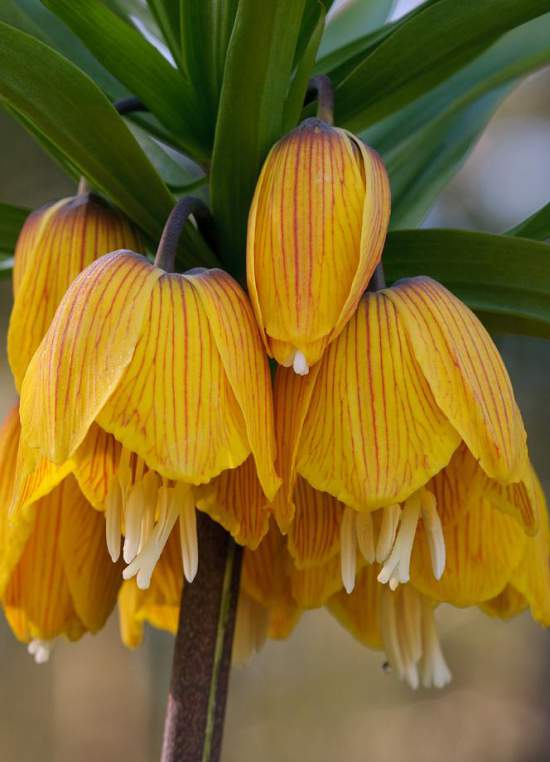

Grouse imperial Striped Beauty
- Garland Star (Fritillaria imperialis Garland Star). Differs in a stable large stem. It grows a unique and large crown of a large number of flowers that have a bright orange color.
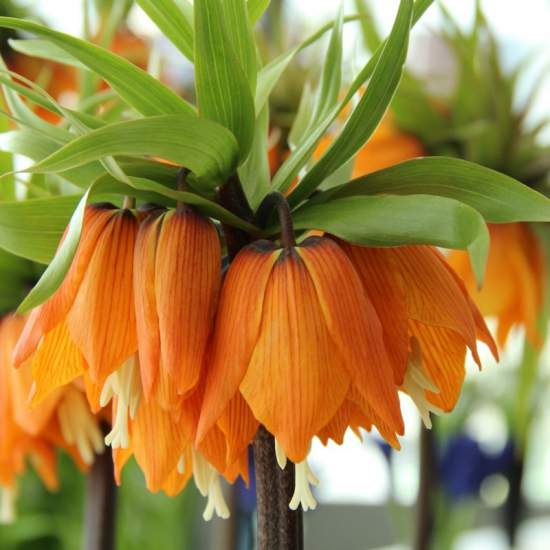

Grouse imperial Garland Star
- Lutea (Fritillaria imperialis Lutea). This variety is distinguished by the presence of flowers with a specific color, and yellow flowers with a white border are often found.This border during the flowering of the imperial hazel grouse can change color, therefore it becomes green or even purple. Such a flower looks great in any flower arrangement on the site.
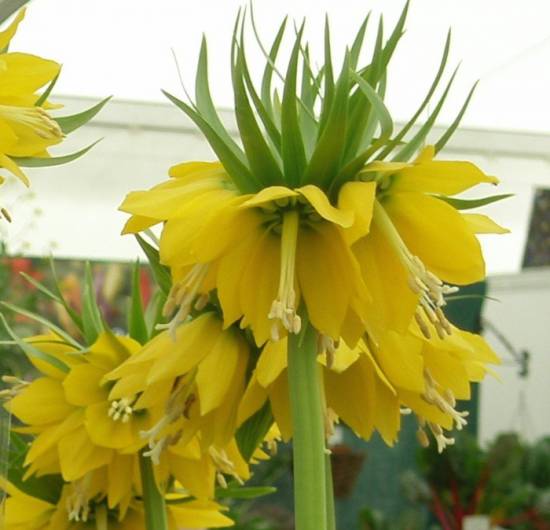

Grouse imperial Lutea
All varieties of imperial hazel grouse amaze with their magnificent beauty and sophistication, and are also considered easy to grow.
Species representatives
Grouse have a rather complex classification. If you briefly try to describe it, then first you need to mention that it consists of six sections, which include a variety of varieties and species.
Section 1 (lat.Eufritillaria)
It consists of four groups, which include species whose birthplace is considered to be the Mediterranean countries, the western part of the Asian continent, and European countries. The most famous representative of this group is the hazel grouse. It can grow up to forty centimeters, has single drooping flowers, purple-brown color with a checkerboard pattern, from which the name itself. In the process of growing and caring, he is not capricious, boasts the presence of many forms that live mainly in front gardens, and varieties, such as: Alba, Aphrodite - carriers of white-flowered forms, Artemis - the owner of purple-green flowers, Jupiter - the owner of the largest perianths, dark red tint. Also, examples of this group category include a hazel grouse called Mikhailovsky, a hazel grouse, a hazel grouse called a needle-leaf, a chess-like hazel grouse, yellow, mountain grouse, and so on.
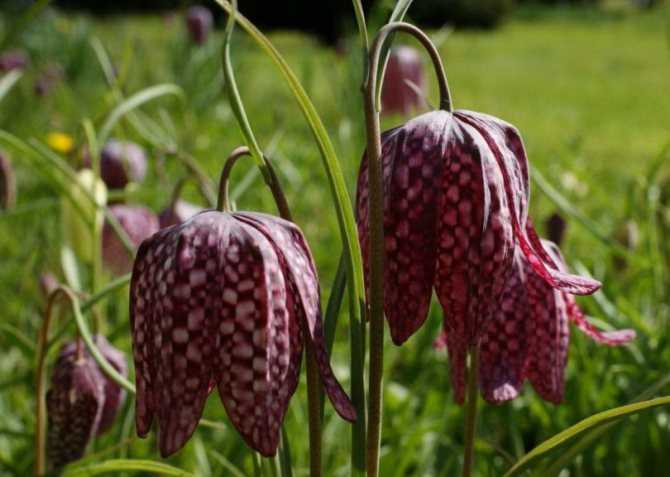

Chess hazel grouse (section 1)
Section 2 (lat.Petilium)
This section consists of the largest species representatives distributed in the Himalayas, Turkey, in the north-eastern part of Iraq and Turkmenistan. The most famous member of this group is considered to be the royal hazel grouse, or its current name is the imperial hazel grouse. It is a Turkish resident, it is from there that it originates. Today there are approximately twenty species of the royal flower. For this hazel grouse, characteristic features are an unpleasant smell of bulbs, a relatively high stem - up to one meter long, the presence of broad-lanceolate leaves of a whorled arrangement and drooping flowers, similar to bells. The flowers themselves reach a size of six centimeters, the dominant color is orange. Famous varieties are Aurora (short in stature with orange-red flowers), Lutea and Lutea maxima (fairly tall representatives from one meter to one and a half, bright yellow flower color), Sulferino is a traditional-shaped hazel grouse, owner of orange flowers with a red mesh. This group also includes Edward's hazel grouse and Radde's hazel grouse.
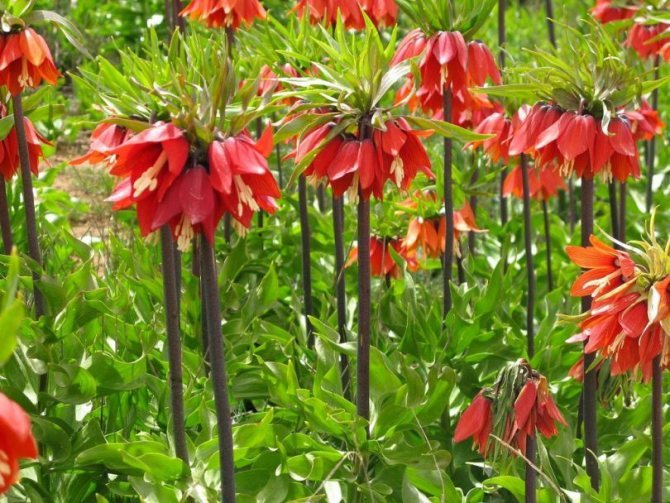

Grouse royal or imperial (section 2)
Section 3 (lat.theresia)
It includes only one species - Persian hazel grouse, which is an inhabitant of the Western side of Asia.
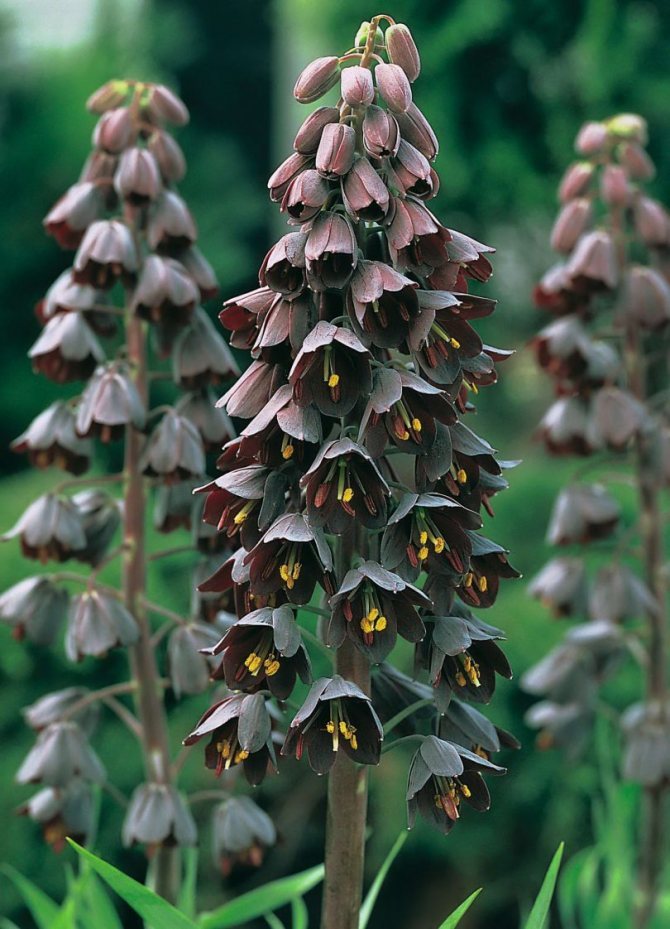

Persian hazel grouse (section 3)
Section 4 (lat.Rhinopetalum)
Inhabitants of the Chinese side and Afghanistan. The most common of them are Kamchatka hazel grouse, two-flowered hazel grouse and called related.
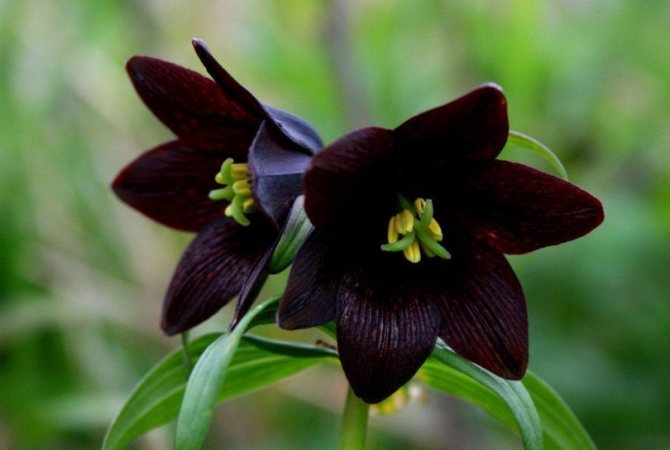

Grouse Kamchatka (section 4)
Section 5 (lat.Korolkowia)
It includes only one species representative called Severtsov's hazel grouse, its habitat is limited only to the region of Central Asia.
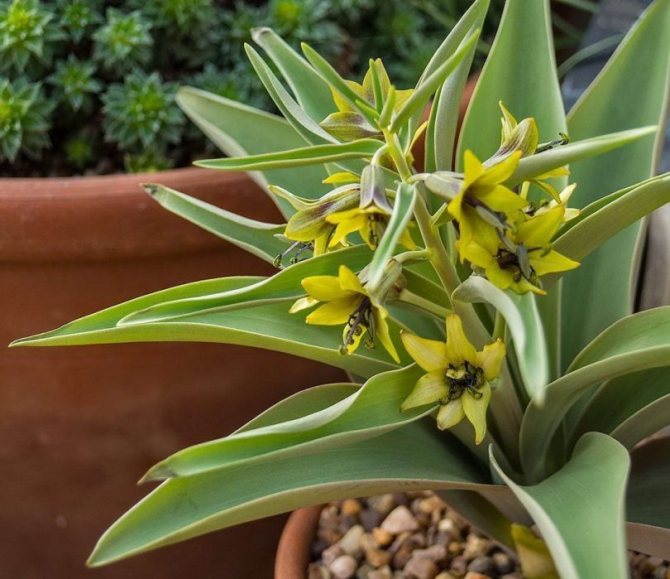

Grouse Severtsova (section 5)
Section 6 (lat.Liliophiza)
This section includes species originating from the countries of the North American continent. For example, one of them is a gray hazel grouse. Relatively short view, with long yellow flowers on the outside and speckled on the inside.
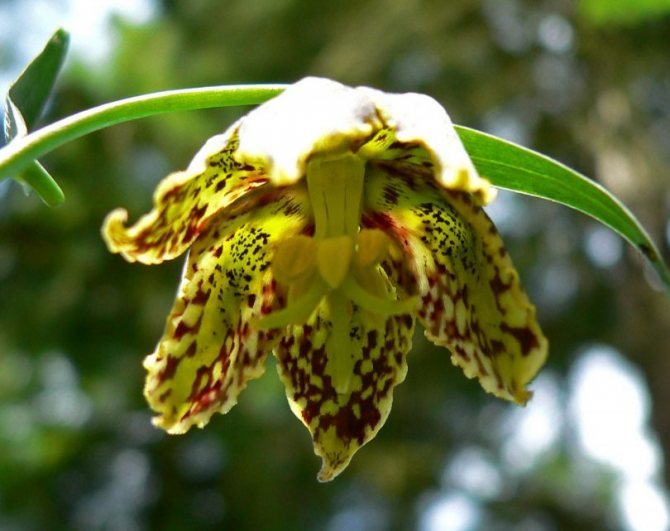

Grouse gray (section 6)
Grouse imperial - landing
It is advisable to plant this plant in the fall, as well as immediately after purchasing the seeds.
The advantage of using this flower on the site is the absence of the need to transplant it annually, since the hazel grouse reproduces by bulbs located underground.
It is best to do this process in September or early October, when the weather is still warm outside. If you have to plant the imperial hazel grouse in November, then the soil is pre-mulched, and after planting it is covered with leaves.
Important! It is forbidden to plant imperial hazel grouse later than November, as they will not grow or will be too weak.
To obtain a competent cultivation result, some recommendations are taken into account:
- before planting, the bulbs are certainly disinfected, for which they are dipped into a solution of potassium permanganate, and also sprinkled with charcoal;
- the bulbs are not equipped with protective scales, so they must be planted immediately, otherwise they will dry out quickly;
- it is important to correctly choose a place for planting the imperial hazel grouse, and it should be sunny, but the presence of partial shade is allowed;
- the soil should not be waterlogged, and it is also not allowed to freeze, since non-observance of these conditions will lead to the fact that the bulbs will begin to rot;
- before planting the imperial hazel grouse, it is recommended to dig up a piece of land, and you need to add a little sand to the soil;
- even humus and peat are introduced into fertile and high-quality soil, since these components contribute to the effective growth of the imperial hazel grouse;
- planting depth depends on the size of the bulb, and is 20-30cm;
- if the bulbs of the imperial hazel grouse are bought, then they should be carefully examined before purchasing, since the presence of areas with rotting is not allowed.
If you strictly follow the basic rules of competent planting, you will be able to grow really high-quality, beautiful and exquisite flowers with bright and luxurious flowering.
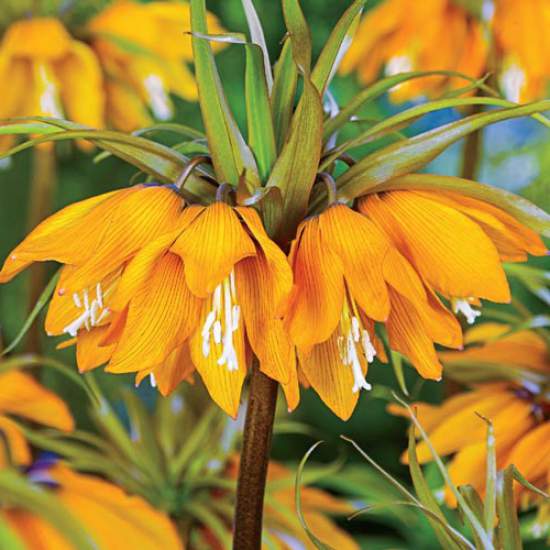

Fritillaria imperialis Sunset
When to dig up the bulbs
Many growers are wondering - when to dig up the bulbs of the imperial hazel grouse? It is not recommended to dig up the bulbs every year. This should be done about once every 2-3 years, for reproduction and changing the site.
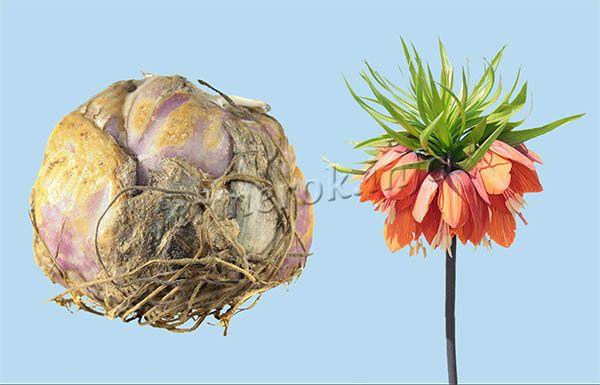

Bulbs of the imperial hazel grouse do not have protective scales, so they dry quickly in the fresh air
Usually, the bulbs are dug up when the flower has faded, the stem has dried, the leaves also turn yellow and die off. This is observed around August. The bulbs are usually dug up, then they are cleaned of dry film, washed with water and kept in a solution of potassium permanganate for half an hour. Existing sections (if the children were separated) must be treated with fungicides and sprinkled with wood ash. After that, you need to place the bulbs in a dry, dark room for storage.
Important!
Small and weak bulbs never bloom. They direct all forces to increase in size. This is one of the reasons why it is necessary to transplant the plant from time to time, because with prolonged development in one place, the bulbs become larger, but they become smaller.
You can store bulbs in a dry, ventilated area. Temperature +30 degrees, no more. There should also be good ventilation. During wintering, their condition is sometimes checked. If rot, mold appears, you need to cut them off and treat the bulbs with fungicides.
Reproduction of imperial hazel grouse
Reproduction of imperial hazel grouse can be carried out in two different ways:
- Seed method. Seeds can be obtained from a special seed box, and they should be taken out only after the final drying of the given plant element. Before planting the seeds of the imperial hazel grouse, you should take care of proper soil preparation. Nutrients must be added to it, as this guarantees not only effective plant growth, but also lush flowering.In order for the flowers of the imperial hazel grouse to please with their beautiful appearance for several years, you should take care of their annual feeding. Seeds are usually planted to a depth of 1 cm. A distance is left between them and the rows, which should not be less than 10 cm. The planted seeds are sprinkled on top with a thin layer of peat. Biennial bulbs are dug up and stored in a cool, dry place as it is important to protect them from moisture.
- Vegetative methods breeding hazel grouse imperial. The mother bulb, which is the largest in the plant, can easily divide into small bulbs called babies. They grow up over several years, and with proper care they begin to bloom. In order for the babies to separate from the mother's bulb without problems, it is recommended to dig them out every two years.
Important! The cultivation of the imperial hazel grouse by the seed method is rarely used, since this process is notable for its considerable duration and complexity.
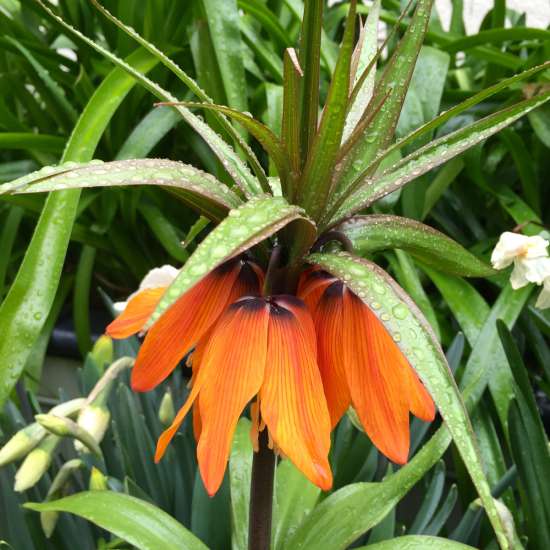

Grouse imperial - growing and care
The imperial hazel grouse is considered a plant that does not require specific care, so the process of growing it is available even for novice gardeners.
Important! Although it is considered easy to grow, it will take a long time to get a beautiful and unique bloom.
To ensure the effective growth of the imperial hazel grouse, proper care is provided during its cultivation, which consists in simple actions:
- watering should be regular, and this is especially important in autumn, so if autumn does not please with frequent rains, then you will have to provide the plants with regular watering;
- so that in harsh winters the imperial hazel grouse does not freeze, before the cold weather the flowers are covered with mulch or film, and you can also use other covering materials;
- after germination of hazel grouse, it is important to provide him with more thorough care, for which the covering material is initially completely eliminated so that sunlight can enter the germinated plants;
- you should not touch the ground after wintering, since usually the roots of the imperial hazel grouse rise significantly in winter, so if you act carelessly, they can be significantly damaged, which will negatively affect the plants themselves;
- an important point is competent feeding of hazel grouses, and the first fertilization should be done after good and warm weather is established on the street in the spring;
- it is advisable to use humus mixed with complex fertilizers and nitrophosphate for feeding, and the mixture made is evenly distributed over the soil where the imperial hazel grouse is planted;
- the next top dressing is applied after the beginning of flowering plants;
- the soil should not be allowed to dry out, therefore it is recommended to cover it with humus or peat;
- the last fertilization is carried out in the fall, for which superphosphate is used, mixed with potassium sulfate, and it is important to make sure that the flowering of the imperial hazel grouse has already ended.
Thus, if you accurately use all of the above recommendations, then it is guaranteed that you will receive lush blooming, beautiful and strong plants that perfectly decorate any private territory.
Important! It is necessary to monitor competent watering, since it is impossible for the soil to be dry or waterlogged, so if the weather is rainy, then the flowers are not watered, and if the summer is dry, then they should be watered regularly.
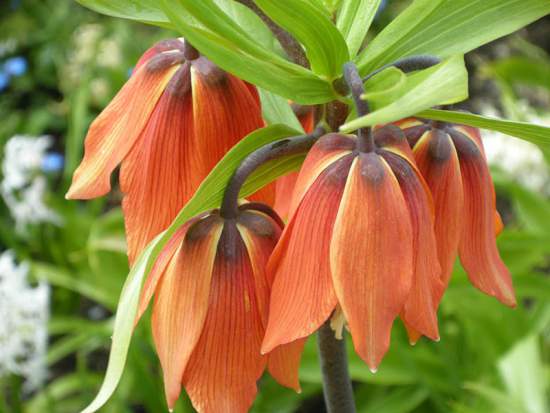

Grouse imperial - diseases and pests
To ensure the attractive appearance and health of imperial hazel grouses, you should carefully understand all the diseases and pests that can affect them.
Important! Usually, the appearance of various diseases or pests is due to the fact that the gardener does not know the basic rules of caring for the plant, therefore, he is not provided with optimal agrotechnical care.
The most common problems that arise in the imperial hazel grouse are:
- Improper care of the bulbs leads to the appearance of decay, and usually this becomes the cause of significant waterlogging of the soil, therefore, to eliminate this problem, all decaying areas are certainly removed, after which the imperial hazel grouse bulb is transplanted into optimal soil. Places of cuts are certainly processed with a special solution of potassium permanganate, after which they are sprinkled with ash or crushed coal.
- Freezing of flowers in winter can lead to the death of imperial hazel grouses.
- Even if the plants are healthy and robust, it is recommended to replant them every three years. This solution guarantees a decrease in the likelihood of various diseases.
- After transplanting the imperial hazel grouse or already in the process of leaving, one should not overdo it with the subcortex, therefore they are applied in moderation and not too often.
- The main pest for hazel grouses is considered to be an onion rattle or a lily beetle, which has a red body and a black head. The main harm is caused by beetle larvae, which are located at the bottom of the leaves. To eliminate these pests, it is necessary to treat the imperial hazel grouse with fungicides, and the larvae are removed from the foliage with a sponge soaked in soapy foam.
Thus, if you understand all the factors leading to the onset of diseases and study the pests, then the gardener can exclude their appearance or development.
Description
Very often you can hear that flowers are referred to as "trees of paradise", perhaps because outwardly they resemble a small palm tree, on top of which there are flowers. The ground part of the plant is presented in the form of a large stem with many leaves of a narrow linear or oblong-lanceolate shape. The arrangement of the leaves can be either scattered or whorled. The base of each leaf has a round or semicircular nectary. Grouse flowers are single, can be collected in an umbrella or panicle. Outwardly, they very much resemble drooping tulips or small lilies.
The outer part of the flower can be of a variety of color shades: for example, yellow, lilac, white or red flowers.
The underground part of the plant is presented in the form of bulbs with fleshy scales, capable of annual renewal. The bulbs do not have integumentary scales, and therefore the attitude towards them should be as careful as possible. The plant is usually ranked among the ephemeroids. The ripening of the hazel grouse results in a small capsule containing many seeds.

